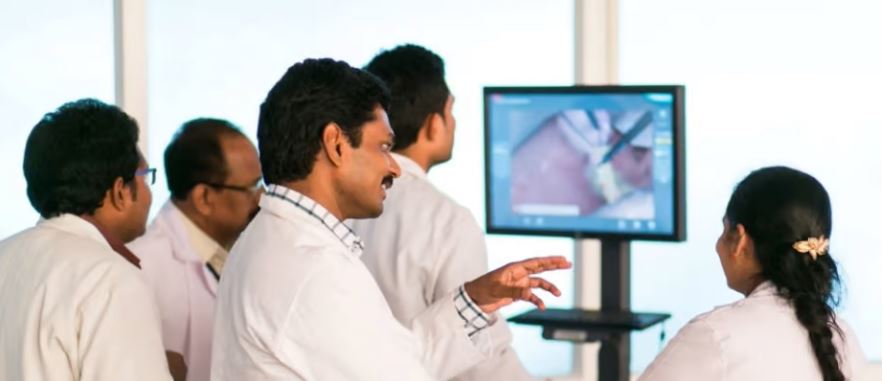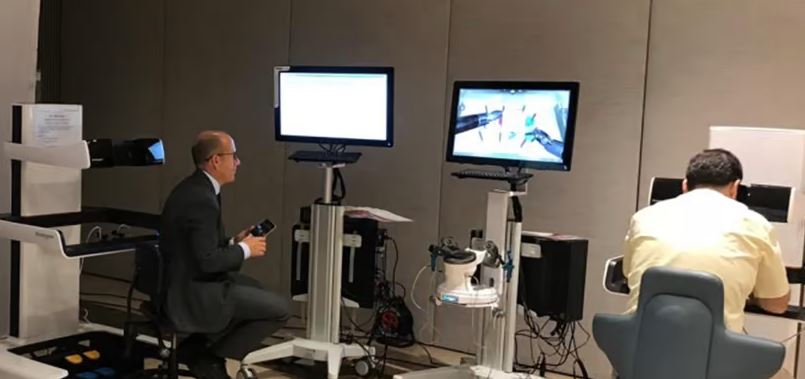Customer Company Size
Large Corporate
Region
- Europe
Country
- United Kingdom
Product
- Blue Yonder’s warehouse management
- Blue Yonder’s labor management
Tech Stack
- Warehouse Management System
- Labor Management System
Implementation Scale
- Enterprise-wide Deployment
Impact Metrics
- Productivity Improvements
- Cost Savings
- Customer Satisfaction
Technology Category
- Functional Applications - Warehouse Management Systems (WMS)
- Functional Applications - Enterprise Resource Planning Systems (ERP)
Applicable Industries
- Education
Applicable Functions
- Warehouse & Inventory Management
Use Cases
- Warehouse Automation
- Inventory Management
Services
- System Integration
About The Customer
Oxford University Press (OUP) is the largest university press in the world, with a history dating back to 1478. It publishes around 7,000 new titles every year in various formats and up to 40 languages. OUP has annual sales of 110 million units and operates its own distribution centre, making it one of the few publishers worldwide that does not rely on a third-party distributor. From its warehouse in Kettering, the organization dispatches 36,000 orders every month, 70 percent of which are destined for addresses outside of the U.K.
The Challenge
Oxford University Press (OUP), founded in 1478, publishes around 7,000 new titles every year, in a variety of formats and up to 40 languages. As the largest university press in the world, it has annual sales of 110 million units. OUP operates its own distribution centre, making it one of the few publishers worldwide to not rely on a third-party distributor. From its warehouse in Kettering, the organization dispatches 36,000 orders every month, 70 percent of which are destined for addresses outside of the U.K. To keep up with growth, OUP sought a scalable warehouse control system to replace their outdated technology which severely restricted how the organization operated and made it reliant on a conveyoring system that was complex and costly to maintain.
The Solution
For more than 14 years, OUP has relied on Blue Yonder’s warehouse management capabilities to facilitate and control its extensive distribution operation. The solution plays a pivotal role in the organization’s warehouse, optimizing almost all its business processes from picking and packing to dispatch. Leveraging Blue Yonder’s warehouse management capabilities give OUP full control and visibility into its detailed distribution processes. As a result, employees can respond to issues quickly and effectively. Paired with warehouse management, labor management encourages best practices in the warehouse. For example, it directs employees on the quickest routes around the 35,851m2 warehouse, so they can pick products for orders as efficiently as possible. Now, able to leverage detailed performance statistics, managers can provide accurate, personal feedback to all warehouse personnel during monthly reviews.
Operational Impact
Quantitative Benefit

Case Study missing?
Start adding your own!
Register with your work email and create a new case study profile for your business.
Related Case Studies.

Case Study
Revolutionizing Medical Training in India: GSL Smart Lab and the LAP Mentor
The GSL SMART Lab, a collective effort of the GSL College of Medicine and the GSL College of Nursing and Health Science, was facing a challenge in providing superior training to healthcare professionals. As clinical medicine was becoming more focused on patient safety and quality of care, the need for medical simulation to bridge the educational gap between the classroom and the clinical environment was becoming increasingly apparent. Dr. Sandeep Ganni, the director of the GSL SMART Lab, envisioned a world-class surgical and medical training center where physicians and healthcare professionals could learn skills through simulation training. He was looking for different simulators for different specialties to provide both basic and advanced simulation training. For laparoscopic surgery, he was interested in a high fidelity simulator that could provide basic surgical and suturing skills training for international accreditation as well as specific hands-on training in complex laparoscopic procedures for practicing physicians in India.

Case Study
IoT platform Enables Safety Solutions for U.S. School Districts
Designed to alert drivers when schoolchildren are present, especially in low-visibility conditions, school-zone flasher signals are typically updated manually at each school. The switching is based on the school calendar and manually changed when an unexpected early dismissal occurs, as in the case of a weather-event altering the normal schedule. The process to reprogram the flashers requires a significant effort by school district personnel to implement due to the large number of warning flashers installed across an entire school district.

Case Study
Implementing Robotic Surgery Training Simulator for Enhanced Surgical Proficiency
Fundacio Puigvert, a leading European medical center specializing in Urology, Nephrology, and Andrology, faced a significant challenge in training its surgical residents. The institution recognized the need for a more standardized and comprehensive training curriculum, particularly in the area of robotic surgery. The challenge was underscored by two independent studies showing that less than 5% of residents in Italian and German residency programs could perform major or complex procedures by the end of their residency. The institution sought to establish a virtual reality simulation lab that would include endourological, laparoscopic, and robotic platforms. However, they needed a simulator that could replicate both the hardware and software of the robotic Da Vinci console used in the operating room, without being connected to the actual physical console. They also required a system that could provide both basic and advanced simulation training, and a metrics system to assess the proficiency of the trainees before they performed surgical procedures in the operating theater.

Case Study
Edinburgh Napier University streamlines long-distance learning with Cisco WebEX
• Geographically dispersed campus made in-person meetings costly and inconvenient.• Distance-learning programs in Malaysia, India, and China required dependable, user-friendly online tools to maximize interaction in collaborative workspaces.• Virtual learning environment required a separate sign-in process, resulting in a significant administrative burden for IT staff and limited adoption of collaboration technology.

Case Study
8x increased productivity with VKS
Before VKS, a teacher would spend a lot of time showing a group of 22 students how to build a set of stairs within a semester of 120 hours. Along with not leaving the teacher much time to provide one-on-one support for each student to properly learn carpentry, it also left a considerable amount of room for error. Key information would be misinterpreted or lost as the class was taught in the typical show-and-tell way.

Case Study
Scalable IoT Empowering GreenFlex's Sustainable Growth
GreenFlex, a company that supports sustainable development, decarbonization, and energy efficiency, faced several challenges in its quest to expand its business. The company needed to deploy a robust and sustainable IoT technology to support its growth. It was crucial for them to monitor and control devices at customer sites in a safe and reliable manner. They also needed to integrate devices across a range of communication protocols and gather and act on data to meet efficiency targets. GreenFlex had previously built IoT capabilities into its digital platform, GreenFlexIQ, to monitor and manage customer sites remotely. However, they soon realized that they needed a new platform to support their ambitions. They needed a platform that could scale to connect more devices for production management and make it easier for the operations team to manage devices in the field.







